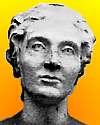
On 1 April 1776, Sophie Germain was born, a French mathematician who taught herself from books and the lecture notes of friends attending the École Polytechnique which she, as a woman, was not permitted to attend.
Using a male pseudonym, M. LeBlanc, she corresponded with Lagrange who recognised her skill, and subsequently sponsored her work.
In 1816, she won a prize sponsored by Napoleon for a mathematical explanation of Chladni figures, the vibration of elastic plates. She won, although the competition was open to such great mathematicians in Paris at the time as Lagrange, Laplace, Legendre, Poisson or Fourier; but they passed the opportunity by.
Sophie Germain - The Unknown Mathematician, an article in The Century Illustrated Monthly Magazine, (1894) lamented:
“It is very remarkable that so great a distinction as to have received the prize of the Institute of France for a profound mathematical discussion should not have preserved the name of Sophie Germain from oblivion, but it has not done so. There are probably not a score of persons in this country who have ever heard of her, and in her own country she is not usually mentioned among its famous women.”
This remarkable woman's passion for mathematics came early in life - age 13. At first her parents even discouraged her, and wanted her to turn to more ladylike pursuits. Yet her resolution was too great to give up. As you will discover as you read the article.

On 1 Apr 1889, the first U.S. commercial dishwashing machine was marketed in Chicago, designed over a number of years by Josephine Cochrane.
She received an award for her invention at the 1893 World’s Fair in Chicago. The company she founded to sell the dishwasher to hotels, restaurants and other commercial groups was purchased in the 1920’s by the Hobart Corporation. They introduced (1949) the “KitchenAid” brand name that is known today.
Other dishwashing machine patents had been issued earlier, starting with a hand-cranked device patented by Joel Houghton on 14 May 1850, but Cochrane was the first to market her design successfully.
She was granted U.S. patent No. 355,139 on 28 Dec 1886. For more details of the state of this technology over a century ago, read the patent and its illustrations of her Dish-Washing Machine.

On 1 Apr 1950, Dr. Charles Drew died as the result of a car accident. Sadly, from that time forward to this day, has a false rumor has been perpetuated. Did the man who helped create the first American Red Cross blood bank bleed to death because a whites-only hospital refused to treat him? NO! In fact, two white surgeons in the hospital worked hard to save him, but Drew died after about an hour.
Today's book pick is: One Blood: The Death and Resurrection of Charles R. Drew, by Spencie Love The book traces both the life of Dr. Charles Drew, the famous black surgeon and blood plasma pioneer—and sets to rest the well-known, false legend about his death.
The author shows that in a generic sense, the Drew legend is true: throughout the segregated era, African Americans were turned away at hospital doors, either because the hospitals were whites-only or because the “black beds” were full. She describes the fate of a young black World War II veteran who died after being turned away from Duke Hospital following an auto accident that occurred in the same year and the same county as Drew’s accident. African Americans are shown to have figuratively “bled to death” at white hands from the time they were first brought to this country as slaves. By preserving their own stories, the author says, they have proven the enduring value of oral history.
The author provides a much-needed service to cut through myths and conspiracy theories to debunk the false narratives. Real history does matter, but it is distorted in too many books and tellings of Dr. Drew’s life and death. Too many people have grown up with the wrong story. This book not only rights the record, but fleshes out the life of Dr. Drew as a truly outstanding man who exemplified manhood, scholarship, perseverance, and uplift.
Now that's been cleared up, the next step is to read the book!
It is available from Amazon, typically about New from $69.93. Used from $3.50. (As of earlier time of writing - subject to change.)
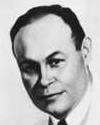 | I feel that the recent ruling of the United States Army and Navy regarding the refusal of colored blood donors is an indefensible one from any point of view. As you know, there is no scientific basis for the separation of the bloods of different races except on the basis of the individual blood types or groups. (1942) |
 | Algebra is but written geometry and geometry is but figured algebra. |
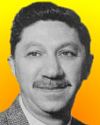 | Science can be the religion of the nonreligious, the poetry of the non-poet, the art of the man who cannot paint, the humor of the serious man, and the lovemaking of the inhibited and shy man. Not only does science begin in wonder; it also ends in wonder. |
| Before you look at today's web page, see if you can answer some of these questions about the events that happened on this day. Some of the names are very familiar. Others will likely stump you. Tickle your curiosity with these questions, then check your answers on today's web page. | |
| Births | |
 | An English physician, born 1 Apr 1578, discovered the true nature of the circulation of the blood and the function of the heart as a pump, thus making the first significant improvement in its understanding in 1,400 years. His precise methods of investigation set the pattern for experimental research. What is the name of this scientist? |
 | On 1 Apr 1908, Abraham Maslow was born, an American psychologist who believed that man has a natural drive to healthiness and knows intuitively what he needs to become physically and mentally healthy. Maslow created his now famous hierarchy of needs. At the base of a pyramid of needs, he grouped the first most basic Physiological Needs (like air, water, food, and sex). He identified three more layers, each layer with a group of needs. At the peak, in the fifth group were gathered needs comprising Self-Actualization (achieving one’s full potential and creativity). What are the named groups in the second, third and fourth layers of his hierarchy? |
| Deaths | |
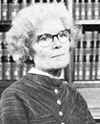 | Dame Kathleen Lonsdale (1903-1971) (née Yardley) was a British scientist who made an experimental determination of the structure of the benzene ring, which showed that all the ring C-C bonds were of the same length and all the internal C-C-C bond angles were 120 degrees. She was the first woman to be elected (1945) to the Royal Society of London. With what physical experimental method did she determine the structure of the benzene ring? |
| Events | |
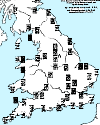 | On 1 Apr 1875, Francis Galton published the first newspaper weather map, now a standard feature in newspapers worldwide. Which newspaper, still published in the present day, printed Galton's weather map? |
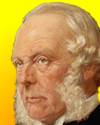 | On 1 Apr 1867, using the antiseptic methods he introduced, an English physician completed a series of treatments of 11 compound fractures that he commenced in the previous month. He chose carbolic acid as disinfectant applied to the dressings. His reports of these treatments in The Lancet forever changed surgical techniques. His book, On the Antiseptic Principle in the Practice of Surgery (1867), was the first treatise on the subject. What is the name of this surgeon that introduced antiseptic methods |
Fast answers for the previous newsletter for March 31: Bunsen burner • 17th century (1596-1650) • insulin • orbit the moon • the decade that includes the year 1880.
 If you enjoy this newsletter, the website, or wish to offer encouragement or ideas, please send feedback by using your mail reader Reply button.
If you enjoy this newsletter, the website, or wish to offer encouragement or ideas, please send feedback by using your mail reader Reply button. Your click on a Facebook, StumbleUpon, or other social button on the site webpages is also a welcome sign of appreciation. Thank you for using them.
© This newsletter is copyright 2020 by todayinsci.com. Please respect the Webmaster's wishes and do not put copies online of the Newsletter — or any Today in Science History webpage. (If you already have done so, please remove them. Thank you.) Offline use in education is encouraged such as a printout on a bulletin board, or projected for classroom viewing. Online, descriptive links to our pages are welcomed, as these will provide a reader with the most recent revisions, additions and/or corrections of a webpage. For any other copyright questions, please contact the Webmaster by using your mail reader Reply button.
--
If you do not want to receive any more newsletters, Unsubscribe
To update your preferences and to unsubscribe visit this link
Executive Real Estate Business Class
-
"It was like a man with wings. It wasn't like anything you'd see on TV or in a monster movie." ...
About the publisher
Search This Blog
Blog Archive
-
▼
2021
(585)
-
▼
April
(57)
- On This Day for April 30 - George Washington inaug...
- Newsletter for Friday 30 April.
- On This Day for April 29 - British royal wedding, ...
- Newsletter for Thursday 29 April.
- On This Day for April 28 - Benito Mussolini execut...
- Newsletter for Wednesday 28 April.
- On This Day for April 27 - Independence for Sierra...
- Newsletter for Tuesday 27 April.
- On This Day for April 26 - Chernobyl nuclear accid...
- Newsletter for Monday 26 April.
- On This Day for April 25 - Hubble Space Telescope ...
- See How They Tracked Down Bin Laden
- Newsletter for Sunday 25 April.
- On This Day for April 24 - Installation of Pope Be...
- Newsletter for Saturday 24 April.
- On This Day for April 23 - Voting for Eritrea's in...
- Earth Day Bonus: Become a Climate Action Expert
- On This Day for April 22 - First Earth Day, Miguel...
- On This Day for April 21 - French elections held, ...
- Newsletter for Wednesday 21 April.
- On This Day for April 20 - Explosion on the Deepwa...
- Newsletter for Tuesday 20 April.
- On This Day for April 19 - American Revolution beg...
- Newsletter for Monday 19 April.
- On This Day for April 18 - The midnight ride of Pa...
- Newsletter for Sunday 18 April.
- On This Day for April 17 - Canada Act proclaimed, ...
- Newsletter for Saturday 17 April.
- On This Day for April 16 - Harriet Quimby's flight...
- Newsletter for Friday 16 April.
- On This Day for April 15 - Sinking of the Titanic,...
- Newsletter for Thursday 15 April.
- On This Day for April 14 - Abraham Lincoln shot, J...
- On This Day for April 13 - Alfred Dreyfus imprison...
- Newsletter for Tuesday 13 April.
- On This Day for April 12 - Launch of first space s...
- Newsletter for Monday 12 April.
- John of Gaunt: father of England’s medieval monarchy
- On This Day for April 11 - Napoleon's abdication a...
- Newsletter for Sunday 11 April.
- On This Day for April 10 - Anschluss approved in A...
- On This Day for April 9 - Fall of Baghdad, Jørn Ut...
- Newsletter for Friday 9 April.
- On This Day for April 8 - Celebration of the Buddh...
- On This Day for April 7 - Jack Nicklaus's first Ma...
- Newsletter for Wednesday 7 April.
- On This Day for April 6 - Olympics revived, Raphae...
- On This Day for April 5 - Battle of Maipú, Colin P...
- The history and origins of Easter
- On This Day for April 4 - Martin Luther King, Jr.,...
- Newsletter for Sunday 4 April.
- On This Day for April 3 - Implementation of the Ma...
- Newsletter for Saturday 3 April.
- On This Day for April 2 - Death of Pope John Paul ...
- Newsletter for Friday 2 April.
- On This Day for April 1 - Creation of Nunavut, Ser...
- Newsletter for Thursday 1 April.
-
▼
April
(57)
-
Blogroll
-
About
HistoryFact










0 comments:
Post a Comment